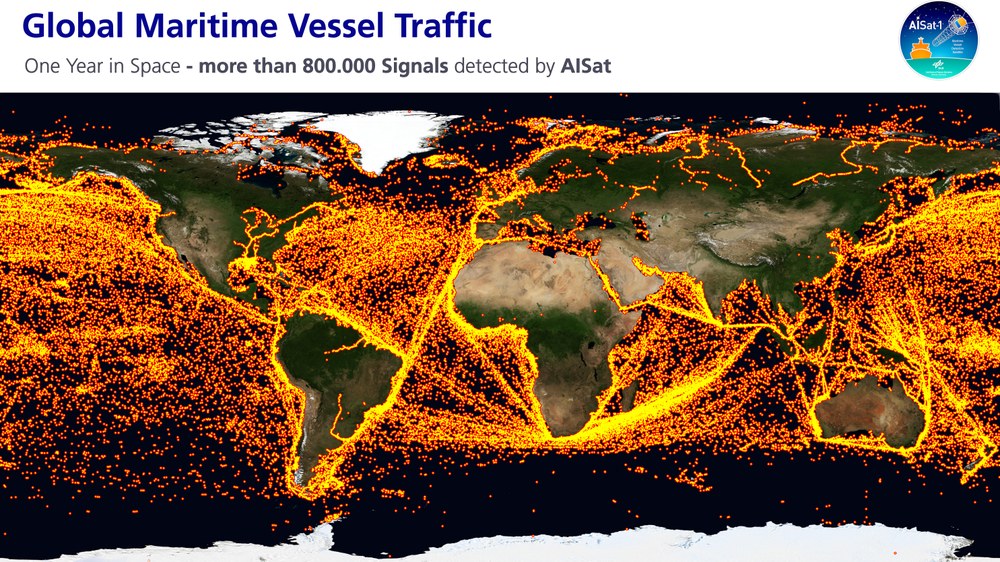AISat

Globalisation leads to increased amounts of traffic on our oceans. To simultaneously increase the safety of this maritime traffic, it has been compulsory for large ships to carry an Automatic Identification System (AIS) since 2002 that monitors ships and tracks their locations and in this way acts as a collision avoidance system. This system exchanges static ship information and dynamic navigational data (position, course and speed) between ships and ground stations.
There are also commercial satellite systems in low-Earth orbit that can intercept AIS signals. These systems complement ground-based facilities and even allow the reception of AIS signals that are transmitted far from the coast. Nevertheless, current satellite systems have their limitations when it comes to the transmission of AIS signals from highly navigated waters, such as the North Sea, the Mediterranean and the American coastline, as well as in and around large harbours, such as Beijing, Tokyo and Singapore. Due to the use of omnidirectional antennas, which scan areas some 6000 kilometres in diameter, the signals of many different ships are received at the same time when using current satellites. This signal overlay makes it impossible to decode the information received. To solve the obvious problem associated with the reception of AIS data in high traffic zones, the Institute of Space Systems in Bremen developed the AISat-1 nanosatellite.
AISat-1 (Automatic Identification Satelite -1) is a technology demonstrator for the surveillance of global ship movements. It is especially used in regions where there are high levels of traffic. The satellite is fitted with a helical antenna, which enables a reduction in the size of the reception area, and therefore a decreased number of overlapping AIS signals. Unfolded, the spiral antenna measures some four metres in length. The use of filters, as well as several damping steps, allow for a better reception.
On 30 June 2014, an Indian launch vehicle carried the DLR AISat-1 satellite into a Sun-synchronous orbit at an altitude of 650 km; 14 days later, the satellite was put into operation. The satellite has been receiving AIS signals from all over the world for more than a year.
AISat-1 can receive signals from the AIS1 and AIS2 channels and, since May 2015, it can also receive information from the new transmission channels, AIS3 and AIS4, which were specifically set up for AIS satellites. Together with the new channels, a new kind of information with a long transmission interval that improves the reception of signals transmitted by ships operating in areas where there is a high volume of traffic was introduced.

